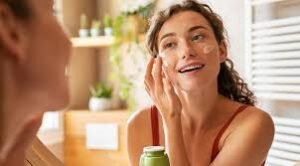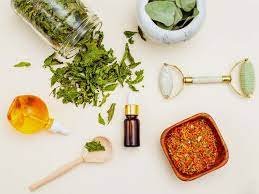Pollutants Harm Skin and How to Protect Against Them
In today’s world, environmental pollution has become a significant concern for our overall health and well-being. Among its many harmful effects, pollution can take a severe toll on our skin, leading to a range of dermatological issues. Understanding the top pollutants that harm your skin and knowing how to protect against them is crucial for maintaining healthy, radiant skin. In this article, we will explore the five most harmful pollutants harm to your skin and provide practical solutions to shield yourself from their damaging effects.
1. Particulate Matter (PM)
Keyword: particulate matter
Particulate matter (PM) is a complex mixture of tiny particles and droplets in the air, including dust, dirt, soot, and smoke. PM is categorized based on its size: PM10 (particles with a diameter of 10 micrometers or less) and PM2.5 (particles with a diameter of 2.5 micrometers or less). These particles can penetrate the skin barrier, leading to various skin problems.
Effects on Skin:
- Clogging of pores, resulting in acne and breakouts
- Premature aging due to oxidative stress
- Inflammation and irritation, causing redness and sensitivity
Protection Tips:
- Cleansing: Use a gentle cleanser to remove particulate matter from your skin. Consider double cleansing at night to ensure all impurities are washed away.
- Antioxidants: Incorporate antioxidant-rich products into your skincare routine to neutralize free radicals caused by PM. Look for ingredients like vitamin C, vitamin E, and green tea extract.
- Barrier Protection: Use a moisturizer that strengthens the skin barrier and creates a protective shield against pollutants.
2. Ozone (O3)
Keyword: ozone pollution
Ozone is a reactive gas found both at ground level and in the upper atmosphere. While beneficial in the upper atmosphere, ground-level ozone is a harmful pollutant that can cause significant damage to the skin.
Effects on Skin:
- Depletion of antioxidants in the skin, leading to oxidative stress
- Premature aging, including wrinkles and fine lines
- Increased sensitivity and irritation
Protection Tips:
- Sunscreen: Use a broad-spectrum sunscreen with SPF 30 or higher to protect your skin from ozone damage. Look for sunscreens that contain antioxidants for added protection.
- Antioxidant Serum: Apply an antioxidant serum daily to replenish the skin’s antioxidant levels and combat oxidative stress.
- Hydration: Keep your skin well-hydrated to maintain its barrier function and reduce sensitivity.
3. Nitrogen Dioxide (NO2)
Keyword: nitrogen dioxide
Nitrogen dioxide (NO2) is a common air pollutant produced by vehicle emissions, industrial activities, and power plants. It can cause significant harm to the skin upon prolonged exposure.
Effects on Skin:
- Inflammation and irritation, leading to redness and sensitivity
- Hyperpigmentation and dark spots due to increased melanin production
- Accelerated aging from oxidative stress
Protection Tips:
- Antioxidants: Use products containing antioxidants to protect your skin from NO2-induced oxidative stress. Ingredients like ferulic acid and resveratrol are effective.
- Cleansing: Cleanse your skin thoroughly to remove any NO2 particles. Use a gentle cleanser suitable for your skin type.
- Protective Barriers: Consider using skincare products that create a physical barrier on the skin to shield it from pollutants.
4. Sulfur Dioxide (SO2)
Keyword: sulfur dioxide
Sulfur dioxide (SO2) is a gas released from industrial processes and the burning of fossil fuels. It can cause various skin issues upon contact.
Effects on Skin:
- Dryness and dehydration, as SO2 can strip the skin of its natural oils
- Irritation and sensitivity, leading to redness and discomfort
- Exacerbation of pre-existing skin conditions like eczema and rosacea
Protection Tips:
- Moisturizing: Use a rich, hydrating moisturizer to combat dryness caused by SO2. Look for ingredients like hyaluronic acid, glycerin, and ceramides.
- Gentle Skincare: Opt for gentle, fragrance-free skincare products to avoid further irritation.
- Humidifiers: Use a humidifier at home to maintain moisture levels in the air and prevent skin dehydration.
5. Volatile Organic Compounds (VOCs)
Keyword: volatile organic compounds
Volatile organic compounds (VOCs) are chemicals emitted from products like paints, cleaning supplies, and personal care products. Prolonged exposure to VOCs can have detrimental effects on the skin.
Effects on Skin:
- Irritation and allergic reactions, causing redness, itching, and rashes
- Disruption of the skin barrier, leading to increased sensitivity
- Potential long-term damage with continuous exposure
Protection Tips:
- Air Purifiers: Use air purifiers at home to reduce VOC levels in the indoor environment.
- Natural Products: Choose natural, non-toxic skincare and cleaning products to minimize exposure to VOCs.
- Ventilation: Ensure proper ventilation in your living and working spaces to disperse VOCs and improve air quality.
Additional Protective Measures
1. Diet and Hydration
Keyword: diet and hydration for skin
Maintaining a healthy diet rich in antioxidants and staying well-hydrated can significantly improve your skin’s resilience against pollutants. Foods like berries, nuts, leafy greens, and fatty fish are excellent sources of antioxidants.
2. Regular Skincare Routine
Keyword: skincare routine
Establishing a consistent skincare routine that includes cleansing, moisturizing, and protecting your skin is crucial. Ensure your routine incorporates products tailored to combat pollution-related skin issues.
3. Avoiding Peak Pollution Times
Keyword: avoiding peak pollution times
Try to avoid outdoor activities during peak pollution times, usually in the early morning and late afternoon. If you must be outside, wearing protective clothing and using skincare products with barrier-forming ingredients can help.
How Air Pollution Affects Your Skin: Common Issues and Solutions

Conclusion
Understanding the top pollutants that harm your skin and knowing how to protect against them is essential for maintaining healthy, vibrant skin. By incorporating proper cleansing, antioxidants, moisturizing, and protective measures into your skincare routine, you can shield your skin from the damaging effects of particulate matter, ozone, nitrogen dioxide, sulfur dioxide, and volatile organic compounds. Additionally, adopting a healthy lifestyle and making informed choices about the products you use can further enhance your skin’s resilience against environmental pollutants. Stay vigilant and proactive in your skincare regimen to keep your skin looking its best despite the challenges posed by pollution.
Keywords: particulate matter, ozone pollution, nitrogen dioxide, sulfur dioxide, volatile organic compounds, antioxidants for skin, moisturizing, skincare routine, diet and hydration for skin, avoiding peak pollution times.







Leave a reply